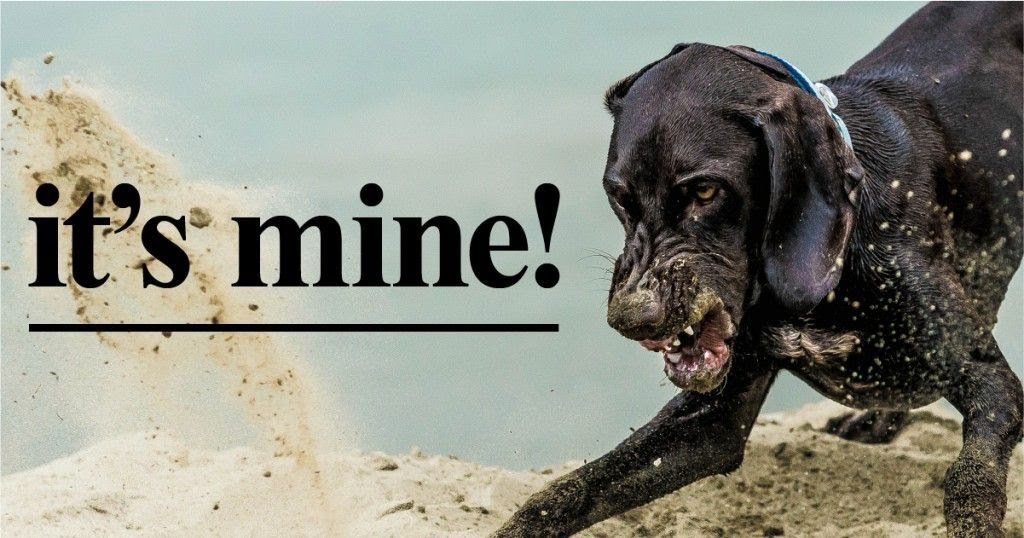Resource Guarding - tips and prevention
Biologically speaking, it actually makes sense that dogs are hardwired to guard their perceived resources. Maintaining access to food, water, shelter, and mates is paramount to the survival of the species.
Unfortunately in today's modern lifestyle resource guarding is greatly misunderstood and equally mishandled. In the not so distant past it was common place for trainers to tell you to grab your dog's food bowl, bones, and toys and "dominate" them. All this does is make your dog think you're an unpredictable lunatic who they have to guard their resources from at all costs!
Some common things that dogs guard:
food
items they may not be allowed to normally have (trash)
high value treats (bones)
resting/sleeping areas (couch or bed)
their favorite people
There is a better approach at resource guarding is thinking ahead and preventing your dog from feeling the need to do so.
In a multi-dog household this can mean:
Feeding all dogs in separate spaces (for example on opposite sides of the room, in crates, in different rooms, or behind baby gates)
Careful management of toys and enrichment activities
Keep all toys put away unless each dog has their own item
Give dogs high value treats (such as stuffed kongs, bully sticks, raw bones, yak chews etc) in separate areas
Ensure each dog has adequate access to water at all times
Keep food bowls/food puzzles/snuffle mats etc put away when not in use
Supervise and manage all interactions where resources may be shared
Not throwing treats or toys into a room where multiple dogs are present
Making sure there are enough comfy spaces for all dogs (in case they aren't keen on sharing at that moment)
How do you know if your dog is resource guarding? If you observe your dog with a high value treat watch for subtle behaviors such as:
Eating faster if someone approaches
Tail wagging more frantically
Watching people/other pets in the room
Picking up the item and walking away to somewhere more secluded - Freezing (suddenly stops eating/moving/wagging tail) - Hunkering (placing their head over the item) - Holding the item down with their paws/muzzle - Staring
Which can then escalate to:
Growling
Snarling (showing teeth)
Snapping
Muzzle
punching
Biting
If you're dealing with your dogs showing aggression over their resources it's a good idea to hire an evidence based trainer who can help you address those behaviors humanely.
Remember your dog is not their behavior - they still love you, they just haven't been taught the socially responsible way to behave yet. That's where you come in!





